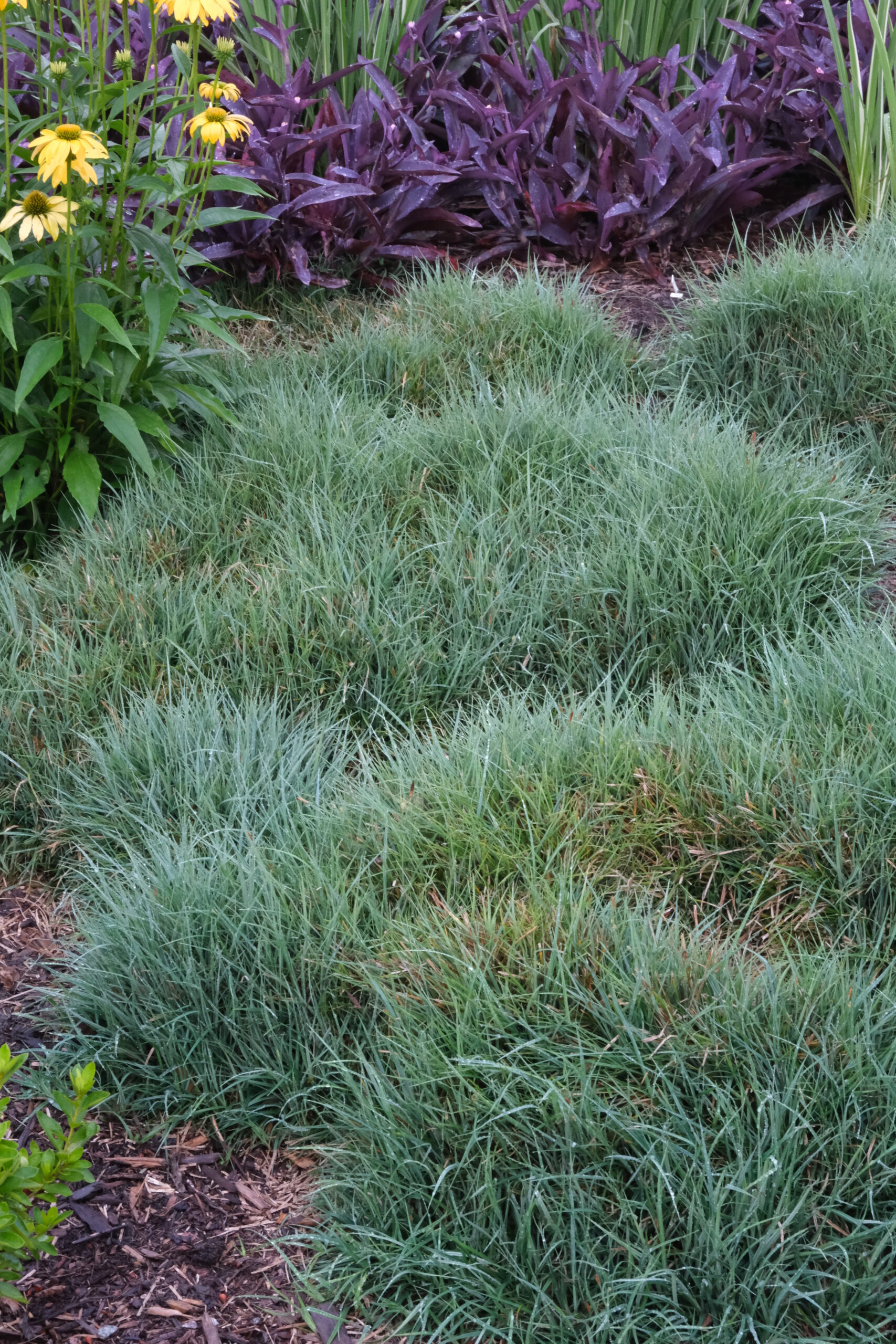There is a “growing” trend toward using groundcovers to reduce the need for bark mulch in gardens. As with any trend, there is a time and place where it is appropriate, and other times when it is not. One plant that we absolutely love for that purpose is the evergreen Carex flacca ‘Mini’. This blue-foliaged sedge is a Mediterranean native marsh grass that spreads very slowly, so it is not a problem in overrunning other plants in the bed, as long as they aren’t placed too close. These pictured below were planted six years ago on 1′ centers, and are just now knitting together.
We have studied a few reports of this sedge being invasive in parts of the northeast US, but our trials have shown quite the opposite, with nary a seedling in over six years. We can find no scientific research that shows this sedge qualifies as being invasive using any commonly recognized definitions of an invasive plant. Our skepticism of these reports comes because some of the ridiculous listings that appear on invasive species lists, which have no scientific basis. Our favorite invasive faux pas was a listing a couple of years ago of the genus Bambusa on a state invasive list. Never mind the plant is a strict clumper and only flowers once every 100 years. Winter hardiness is Zone 4-9.


Groundcovers sound like a good deal but there’s a lot of maintenanc and weeds even after they fill in. I have rarely seen a nice example.
Great point. In this case, the carex is extremely good at choking out weeds. The key to success with groundcovers is proper preparation and maintenance. Weeds in groundcovers are worse when the soil in which the plants are planted do not first have the seed bank depleted. For example, in our county, there are 7000 weed seed per square foot of bare soil. The second cause of weeds in groundcovers is where weed seed are allowed to blow into the planting area from outside. If the weed seed require light to germinate, most groundcovers will usually keep the weeds from germinating, but when no light is required, the weed seed may still sprout. As long as germinated weed seed are removed promptly, and not allowed to reseed, the problem is easily solved. Properly installed groundcovers mean greatly reduced maintenance, but not, no maintenance.